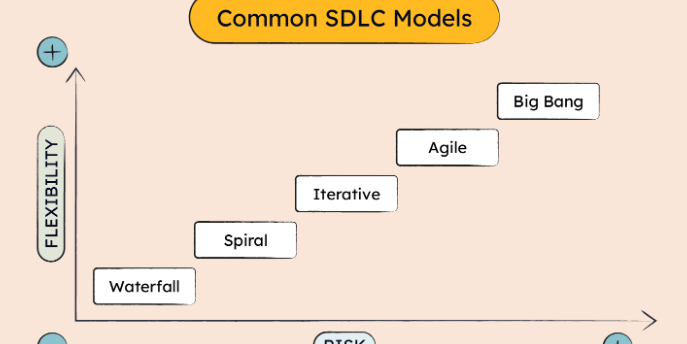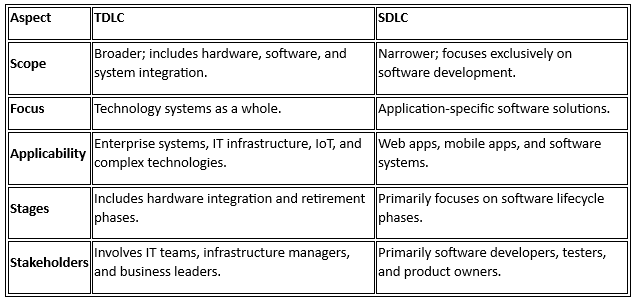Understanding TDLC vs. SDLC: Key Differences and Their Roles in Development
Explore the key differences between TDLC and SDLC, two essential frameworks in technology and software development. Learn how each approach can guide project success, from infrastructure management to application delivery, and discover when to use them for optimal results.
Tamika Price
2/21/20242 min read


Understanding TDLC vs. SDLC: Key Differences and Their Roles in Development
In the dynamic landscape of technology, frameworks and methodologies are essential for successfully delivering systems and solutions. Two prominent frameworks, the Technology Development Life Cycle (TDLC) and the Software Development Life Cycle (SDLC), play distinct roles in development and implementation. While they share similarities, their scopes, purposes, and applications differ significantly. Understanding these distinctions helps organizations select the most effective approach for their projects.
What is TDLC?
The Technology Development Life Cycle (TDLC) is a comprehensive framework that governs the development, deployment, and management of technology solutions. It encompasses hardware, software, and system integration, providing a holistic perspective on technology evolution. The stages of TDLC include:
Planning and Requirements Gathering: Defining goals and technical requirements.
Design: Creating system architectures and technical specifications.
Development: Building and integrating hardware, software, and infrastructure components.
Testing: Verifying that all components function cohesively and meet quality standards.
Implementation/Deployment: Deploying the technology in an operational environment.
Maintenance and Support: Managing updates and resolving issues.
Retirement: Decommissioning outdated or obsolete technologies.
TDLC is particularly valuable in projects involving multiple technological components, such as enterprise systems, IT infrastructure, or IoT ecosystems.
What is SDLC?
The Software Development Life Cycle (SDLC) focuses specifically on the structured development and delivery of software applications. Its processes ensure software quality, performance, and reliability. The key stages of SDLC are:
Requirement Analysis: Identifying user needs and defining system requirements.
System Design: Developing detailed designs for the software architecture.
Implementation (Coding): Writing and compiling software code.
Testing: Ensuring the software meets requirements through various testing methodologies.
Deployment: Delivering the software to end-users or a production environment.
Maintenance: Managing bugs, updates, and new feature requests.
SDLC is commonly applied to application development projects, including mobile apps, web platforms, and enterprise software solutions.
Key Differences Between TDLC and SDLC
Although TDLC and SDLC share a lifecycle structure, their scope and focus distinguish them:
Choosing Between TDLC and SDLC
Organizations should choose the appropriate framework based on project requirements:
When to Use TDLC: Ideal for projects requiring the development and integration of multiple technologies, such as enterprise-wide IT infrastructure or IoT solutions.
When to Use SDLC: Best suited for software-focused projects, such as developing a mobile app or enterprise software platform.
Integration of TDLC and SDLC
In many scenarios, TDLC and SDLC are complementary rather than exclusive. For example, deploying an enterprise resource planning (ERP) system may involve TDLC for infrastructure and SDLC for software customization.
Conclusion
Both TDLC and SDLC are essential frameworks that provide structured approaches to managing complexity and ensuring quality. By understanding their differences and respective applications, organizations can align their development efforts with strategic goals, fostering innovation and success in today’s technology-driven environment.


